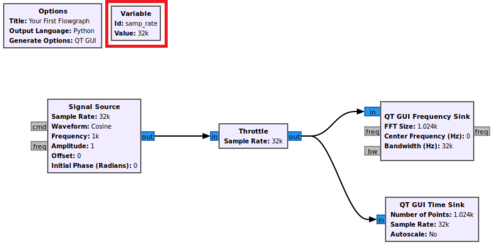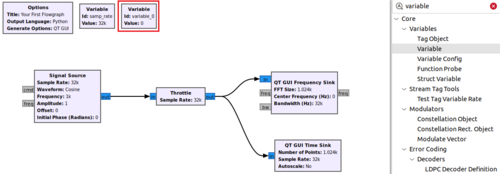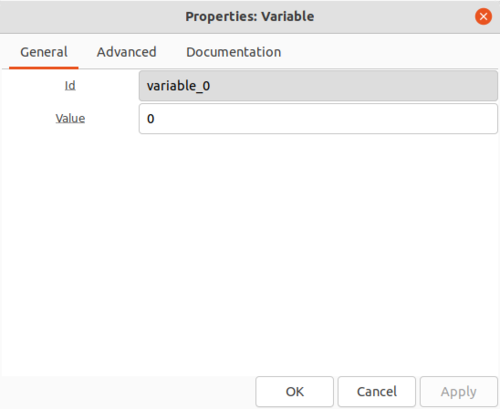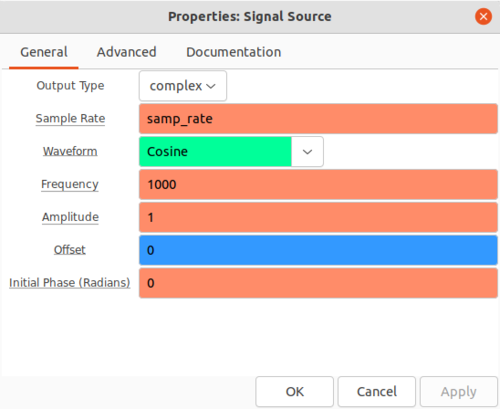Variables in Flowgraphs: Difference between revisions
Mattcarrick (talk | contribs) No edit summary |
Mattcarrick (talk | contribs) No edit summary |
||
| Line 16: | Line 16: | ||
Double-click the ''variable_0'' block to view and modify it's parameters. | Double-click the ''variable_0'' block to view and modify it's parameters. | ||
[[VariableProperties.png|500px]] | [[File:VariableProperties.png|500px]] | ||
Double-click the ''Signal Source'' block to : | Double-click the ''Signal Source'' block to : | ||
Revision as of 18:36, 3 January 2022
This page describes the fundamentals of a flowgraph: how to make and edit variables, and data types. The flowgraph from the previous guide (Your First Flowgraph) will be used as a reference.
Variables
A GNURadio flowgraph is a .py Python file. Just as Python code can have variables so too can a GNURadio flowgraph by using the Variable block.
Every new flowgraph starts with the samp_rate variable:
GNURadio blocks are implemented as functions and can take parameters which modify their behavior. All of the blocks in the flowgraph above use samp_rate as a parameter. Create a new variable block by dragging and dropping it from the block library on the right:
Double-click the variable_0 block to view and modify it's parameters.
Double-click the Signal Source block to :
You'll notice that samp_rate is the variable being used for the Sample Rate but Frequency is hard coded to 1000.
TODO: make/edit variables complex vs float (blue vs orange) compare the python .py code with the visual GRC flowgraph



